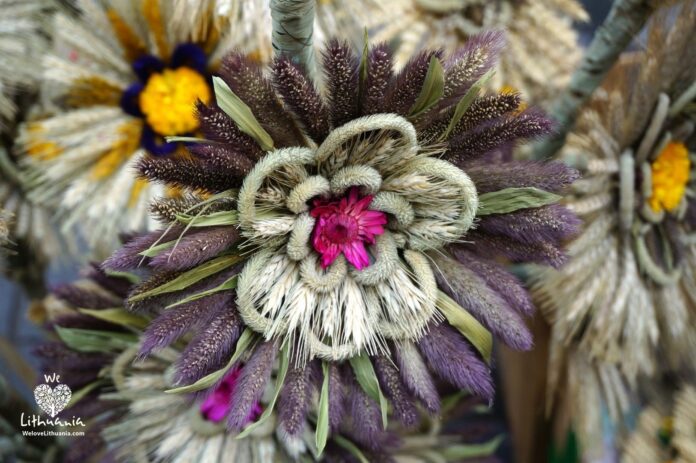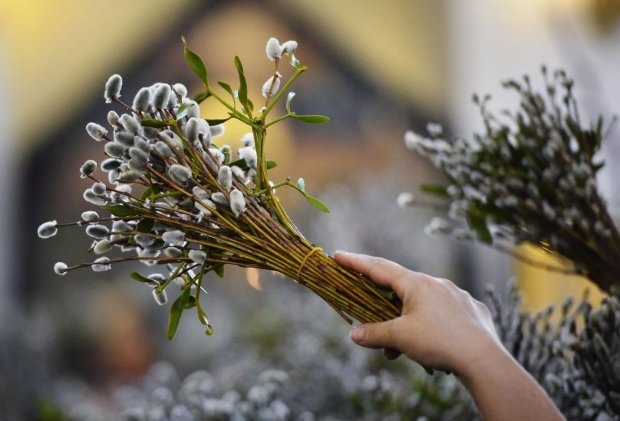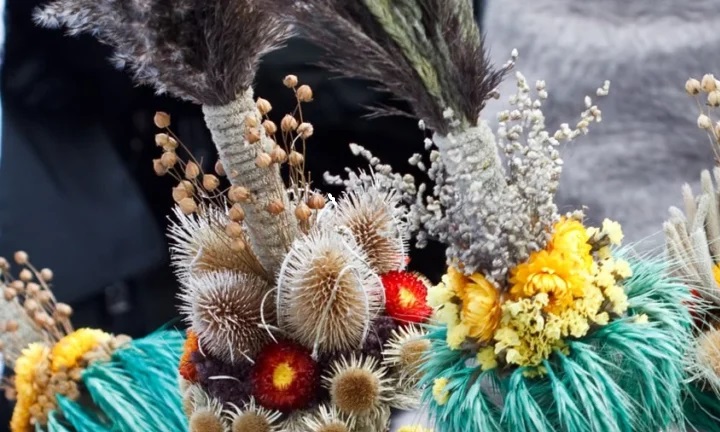
Palm Sunday, or the 6th Sunday of Lent, is the first festival of spring. It is called Palm Sunday in most European countries. In the Catholic Church, the blessing of palms came into practice in the fifth century. Instead of using palms, which were not available in northern countries, in Lithuania small bouquets of twigs were used. It was believed blessing twigs from the earliest budding plants would ensure the fertility of the fields and animal touched by them, promote a person’s good health, prevent lightning from striking a home, enrich the harvest and protect seedlings seeds from hail and rodents.
Throughout Lithuania, it was believed that on Palm Sunday everyone, both young and old, must come to Mass holding a juniper branch or some other twig (verbelė). In Aukštaitija (the Highlands, or the northeastern region), Suvalkija (the southwestern region) , and Žemaitija (Samogitia, or the Lowlands in the country’s west), juniper branches were most commonly used. In Dzūkija (the southeast) and eastern Aukštaitija, willow branches were popular, mixed with juniper. Pussy-willlow branches or other willow or birch branches were gathered ahead of time and put in water to sprout leaves before Palm Sunday. The branches were often decorated with paper flowers, blossoms from indoor plants, snowdrops – even cranberries. The stems were wrapped in paper, to cover the prickly juniper needles.
On Palm Sunday, someone in the household had to rise earlier than everyone else to “beat” those still sleeping with a “verba”, shouting “I’m not beating you, it’s the “verba”! Easter is a week away – promise me an Easter egg!”
 Women would tie their “verbos” with red woollen yarn. It was thought that tying that yarn around their waists during the rye harvest would keep their backs from aching. Women, being the most “useful”, would carry large “verbos”, while men and children had small ones. Some were very elaborate, plaited from dried plants, flowers and grasses. It was disgraceful to arrive at church without a “verba”. It was said that the devil himself would give such a person his tail to hold all through the Palm Sunday Mass.
Women would tie their “verbos” with red woollen yarn. It was thought that tying that yarn around their waists during the rye harvest would keep their backs from aching. Women, being the most “useful”, would carry large “verbos”, while men and children had small ones. Some were very elaborate, plaited from dried plants, flowers and grasses. It was disgraceful to arrive at church without a “verba”. It was said that the devil himself would give such a person his tail to hold all through the Palm Sunday Mass.
After being blessed at Mass, the “verbos” were brought home. Children were playfully struck with them to ensure their health and obedience. Juniper twigs were tucked under the roof to prevent lightning strikes. When the juniper needles dried out and fell from their branches, they would be saved and burned as incense in the house during a storm, or to ensure a family member’s safe journey, to bless bees, poultry, or farm animals when they first went out to pasture in springtime. Another variation was to keep the twigs until the next year’s Ash Wednesday, then burn them.
“Verbos” were first mentioned in Lithuanian in a Lutheran sermon dating back to 1573. In many areas, young people would bring blessed “verbos” to old or solitary neighbours. Most famous and decorated most lavishly were “verbos” made by villagers in the 50-kilometre radius around Vilnius. They are called “Vilniaus verbos”.
The craft of making “verbos” is a unique Lithuanian folk art. “Verbos” can be simple or complex, limited only by the artist’s imagination. Most are “roll” shaped, with dried flowers and grasses tied all around a stick. They can be feathery, with or without ornate tops and made with wheat heads, mosses and ribbons. They are a very popular tradition at the annual St. Casimir’s Fair in Vilnius.






























